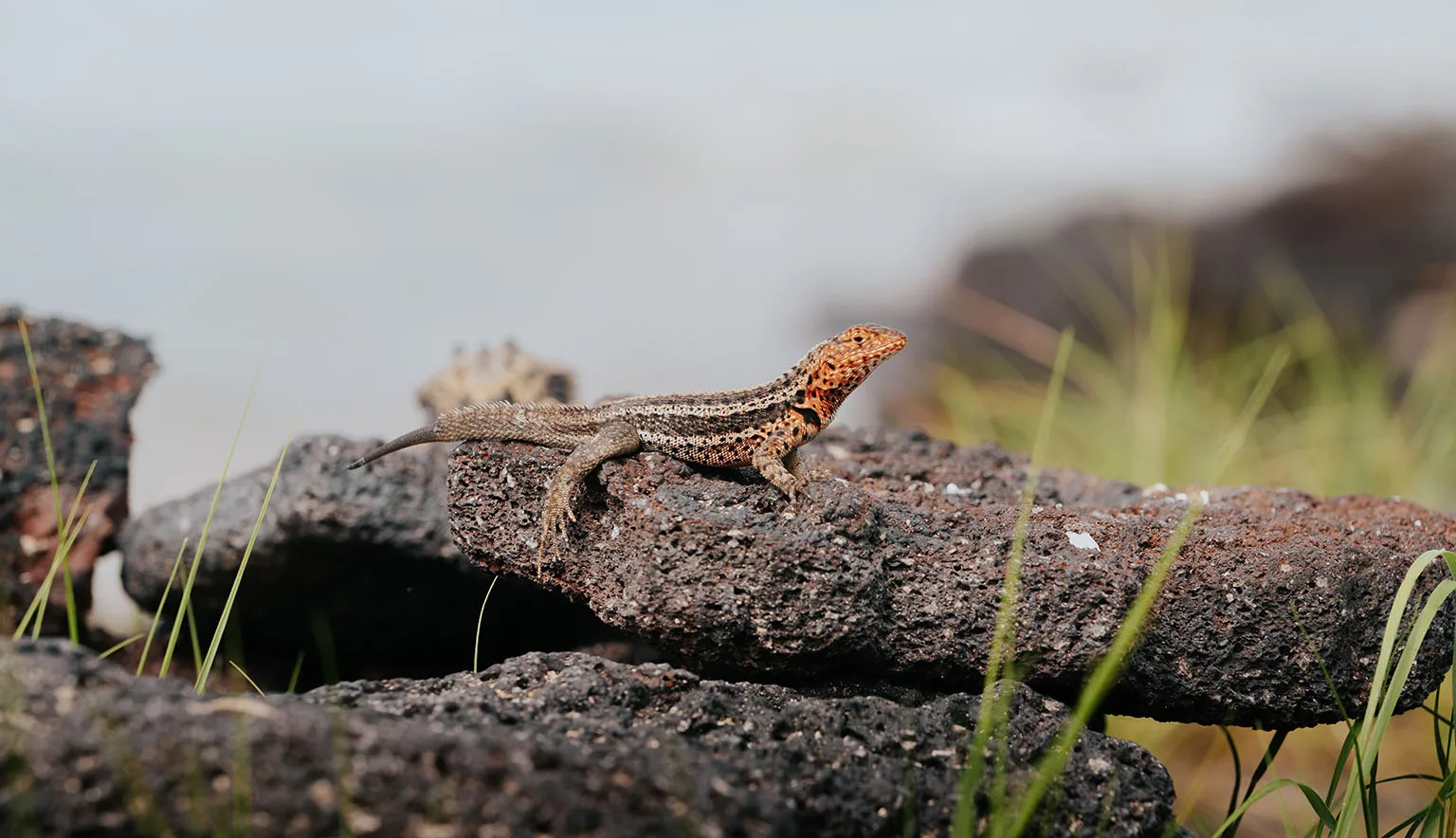Bountifully biodiverse and brimming with once-in-a-lifetime opportunities to catch a glimpse of Earth’s most unique species, the Galápagos Islands are an archipelago like no other. Comprising 13 major islands, something spectacular awaits every traveller.
GALAPAGOS ISLANDS
A microcosmic world of scientific wonder and exceptionally rare wildlife not seen anywhere else on Earth, the Galápagos Islands have been a verdant hub of fascination for centuries.
Left untouched for thousands of years until they were discovered in 1535, this Edenic paradise was left to blossom and evolve and has since enticed and enthralled nature lovers, intrepid explorers, eager travellers, and even world-famous scientists.
Indeed, the Galápagos Islands famously provided key evidence for Charles Darwin’s theory of evolution and natural selection during his five-week expedition to the archipelago in 1835 – a landmark moment in modern science.
Darwin and his transformative legacy can be felt across the region to this day, rooted deep within the archipelago’s extensive conservation efforts. Specialist reserves and conservation areas continue to provide travellers with unbelievable opportunities to see majestic creatures and otherworldly species such as the marine iguana, 13 different groups of finches, the Galápagos giant tortoise, the Galápagos penguin, the waved albatross, and so much more.
As one of the first locations to be named a UNESCO World Heritage Site in 1978, this diverse network of exceptionally rare flora and fauna make the Galápagos Islands an undoubtable haven for nature lovers and keen conservationists.
Yet, despite its outstanding biodiversity, the islands offer a vast spectrum of travel experiences that cater to not only science lovers, but curious biologists, passionate conservationists, tranquil beach sunbathers, adventure seekers, and tenacious trekkers.
Indeed, the archipelago offers a never-ending map of outstanding hiking trails that span from the jutting lava rocks of the archipelago’s 21 volcanoes to the gentle shores of its pristine seascapes, offering a path for the most intrepid explorer or hiking novice, with particularly special routes on the islands of San Cristóbal, Santa Cruz, and Isabela.
From the highlands of mighty volcanoes to the wonderful underwater world, the Galápagos Islands are also packed with diving and snorkelling experiences that let travellers immerse themselves in and marvel at meandering turtles, playful penguins, whale sharks, and other serene ocean dwellers.
For those seeking a little luxury, the archipelago has myriad cruise liners and extravagant yacht experiences to choose from, allowing destination-goers to glamorously explore everything this stunning archipelago has to offer.
Whether travellers are looking to follow in Darwin’s footsteps and catch a glimpse of the archipelago’s exquisite endemic species, explore its outstanding landscapes via foot, snorkel in the majestic seas, or island hop in style, the Galápagos Islands are the crowning jewel of the Pacific Ocean.
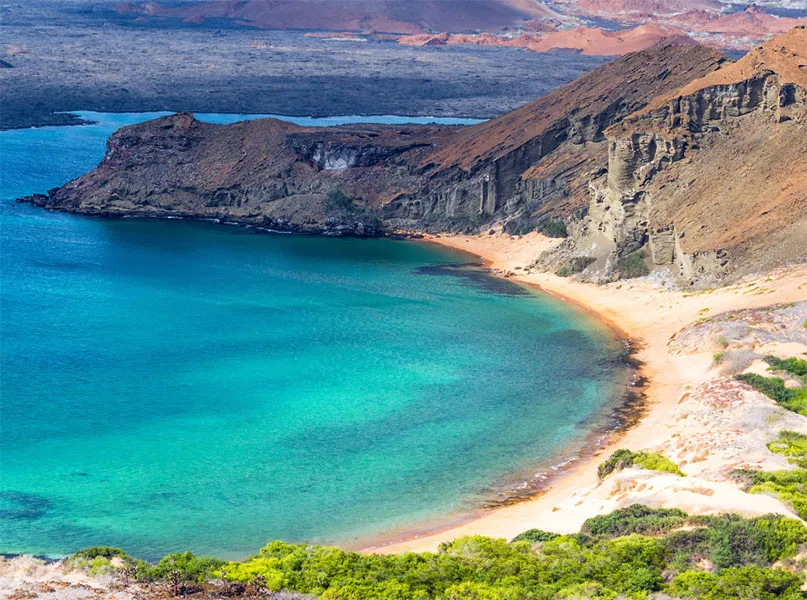
Q&A WITH THE MINISTRY OF TOURISM OF ECUADOR
Responsible for positioning Ecuador as a world-class destination, the Ministry of Tourism of Ecuador promotes sustainable, inclusive, and innovative tourism that showcases the incredible diversity of the country’s four worlds – the Amazon, the Andes, the Coast, and the Galápagos Islands. Mateo Estrella, Minister of Tourism, tells us more about the organisation’s commitment to enhancing visitor experiences, empowering local communities, and conserving the country’s natural and cultural heritage
Firstly, in what ways do the Galápagos Islands stand out from the rest of Ecuador as a top travel destination?
Mateo Estrella, Minister of Tourism (ME): They are truly a living museum and natural sanctuary.
Whilst mainland Ecuador offers breathtaking volcanoes, rich cultural traditions, and vibrant cities, the Galápagos Islands are unmatched in their pristine beauty and scientific significance.
They are the only place on Earth where you can walk amongst species found nowhere else, surrounded by crystal-clear waters and untouched landscapes that captivate every traveller.
Can you highlight some unique features of the archipelagos’ three main islands: San Cristóbal, Santa Cruz, and Isabela?
ME: San Cristóbal is a favourite amongst adventure seekers – it’s home to the only permanent freshwater lake in the Galápagos Islands, El Junco Lagoon, and boasts world-class surf spots like Punta Carola, which is ideal for those looking to ride the waves.
Santa Cruz is the heart of conservation in the Galápagos Islands. It is home not only to the iconic giant tortoises – observed roaming freely in the lush highlands, a moving and unforgettable experience for any traveller – but also the Charles Darwin Research Station, a global hub for scientific study and conservation.
Isabela, the largest island in the archipelago, is a land of volcanic wonder where visitors can hike the impressive Sierra Negra crater, spot wild flamingos in secluded lagoons, and relax on tranquil beaches with stunning sunsets.
The island also offers exceptional opportunities for snorkelling, revealing an underwater world teeming with marine life – sea turtles, rays, and colourful fish amongst lava tunnels and coral reefs.
It’s a true paradise for nature lovers, both above and below the surface.

“Whilst mainland Ecuador offers breathtaking volcanoes, rich cultural traditions, and vibrant cities, the Galápagos Islands are unmatched in their pristine beauty and scientific significance”
Mateo Estrella, Minister of Tourism, Ministry of Tourism of Ecuador
Renowned across the world for its endemic flora and fauna, how can budding conservationists best explore the Galápagos Islands’ incredible wildlife?
ME: The best way to explore the islands’ extraordinary biodiversity is through guided experiences led by certified naturalist guides from formal, authorised tourism operators.
Visitors can discover the archipelago in two main ways: by joining boutique cruises that navigate between islands, offering comfortable onboard accommodation and expert-led excursions, or by staying on inhabited islands and taking daily boat trips to nearby sites, which allow for deeper natural immersion. Both options provide unparalleled access to wildlife and landscapes whilst supporting conservation and sustainable tourism practices.
Currently, the islands offer a wide range of tours, including snorkelling, diving, and wildlife observation, all designed to bring visitors face to face with unique species like marine iguanas, sea lions, blue-footed boobies, and giant tortoises.
These experiences are not only unforgettable – they also contribute directly to conservation and community development.
To explore the area’s deep connection to Charles Darwin’s theory of evolution and know more about ‘nature’s laboratory’, travellers can visit the Charles Darwin Research Station. Here, people can learn about the investigation into endemic species and efforts to preserve them in their natural environments.
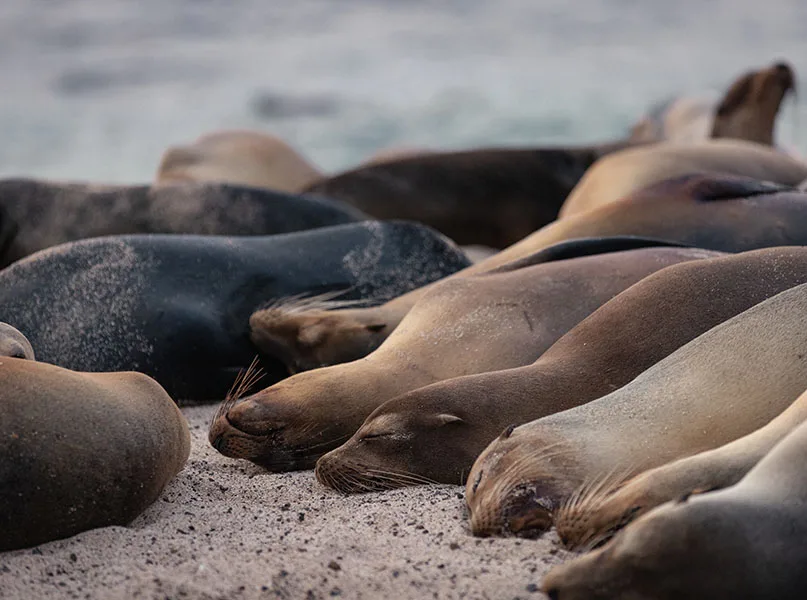
How can travellers best experience the magnificence of the Galápagos Islands’ volcanoes and lava tunnels?
ME: To truly experience the volcanic power of the Galápagos Islands, visitors should explore with certified guides via formal tourism services.
Hiking Sierra Negra on Isabela Island – one of the largest volcanic craters in the world – offers breathtaking views and an unforgettable journey through dramatic lava landscapes.
In Santa Cruz, guided tours through ancient lava tunnels provide a unique opportunity to walk inside the geological veins of the islands, learning about their formation in a safe and educational environment. These experiences connect travellers with the raw, untouched essence of the archipelago.
In your opinion, what is the archipelago’s most underrated attraction?
ME: Floreana Island, often overshadowed by its more famous regional counterparts, is a hidden gem teeming with unique wildlife and breathtaking landscapes.
This lesser-known destination boasts stunning beaches, crystal-clear waters, and vibrant marine life, making it a paradise for snorkellers and nature enthusiasts alike.
The island’s rich history, highlighted by tales of its intriguing early settlers and pirates, adds a captivating layer to its charm.
With fewer tourists, Floreana Island offers a serene and authentic experience, allowing visitors to connect with the untouched beauty of the Galápagos archipelago in a way larger islands cannot provide.
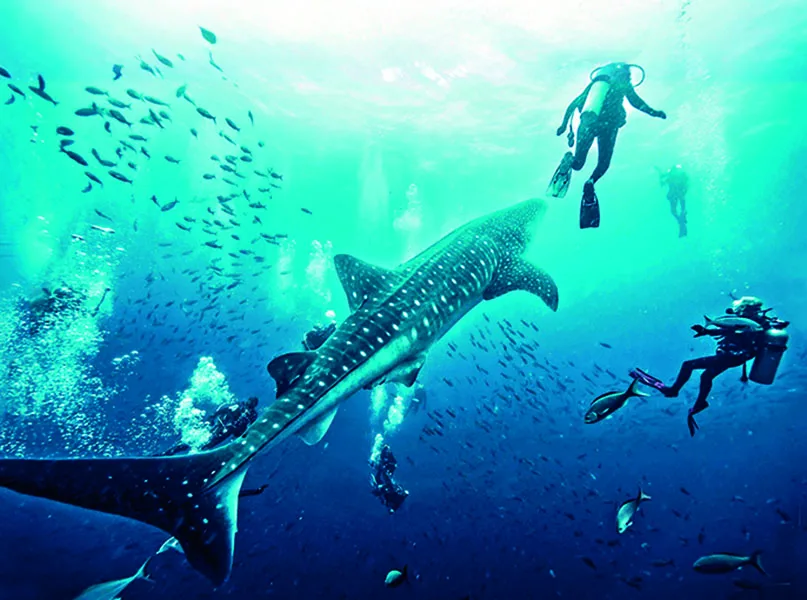
What challenges does the Galápagos Islands’ tourism industry face and how are you working to overcome them?
ME: The main challenge is preserving the delicate balance between tourism and conservation. We are committed to sustainable tourism practices, including strict visitor caps, environmental guidelines, and community engagement.
Through collaboration with local authorities, international organisations, and scientific institutions, we are ensuring tourism supports, rather than threatens, the unique ecosystems of the Galápagos Islands.
Are you optimistic about the future of the tourism industry in the Galápagos Islands?
ME: Absolutely. The global demand for meaningful, nature-based travel is growing – and the Galápagos Islands are perfectly positioned to meet it.
With continued investment in sustainability, infrastructure, and local capacity-building, we believe the future is bright.
Our goal is to ensure future generations can continue to marvel at this natural treasure, just as visitors do today.

OUTLOOK RECOMMENDS
Eat:
FOR GRILLED CUISINE WITH AN ISLAND ATMOSPHERE…
Alive with character and even greater food and drink choices, IslaGrill Lounge has resided on the sunny, breezy shores of Puerto Ayora for over 14 years.
The restaurant’s laidback vibe is complimented by an eclectic menu specifically curated with signature cocktails and a fine selection of dishes that transport visitors to every corner of the world.
Foodies have the chance to experience the tantalising taste of grilled canchalagua, a traditional meal featuring the black-shelled mollusc that brings to life its delicate flavours, served with a fragrant coconut sauce.
Guests can also sample a staple Ecuadorian snack, Corviches, that combines green plantain, shrimp, and fish in a tangy citrus mayonnaise.
IslaGrill Lounge’s friendly atmosphere, unbeatable bites to eat, and breathtaking sea views continue to entice foodies from far and wide.
Do:
FOR DISCOVERING AN ENCHANTING ADVENTURE…
As the gateway to an unforgettable Galápagos experience, Agora Tours specialises in land-based day tours and private adventures across stunning Isabela Island and beyond with knowledgeable local guides. Offering a seamless and meticulously crafted experience, Agora Tours is committed to delivering journeys that evoke profound enjoyment and create lasting memories.
FOR SEEING AN ABUNDANCE OF MARINE SPECIES…
Calipso Galapagos Expedition & Diving
FOR A PASSAGE INTO THE MYTHICAL….
Inviting guests to experience the rare harmony between the raw wonders of the Galápagos Islands and the vibrant depths of the Amazonia, Golden Experiences & Travel offers award-winning cruises and ecolodges that are rooted in both luxury and purpose. As proud agents of change, the company works to uplift and protect the ecosystems it calls home.
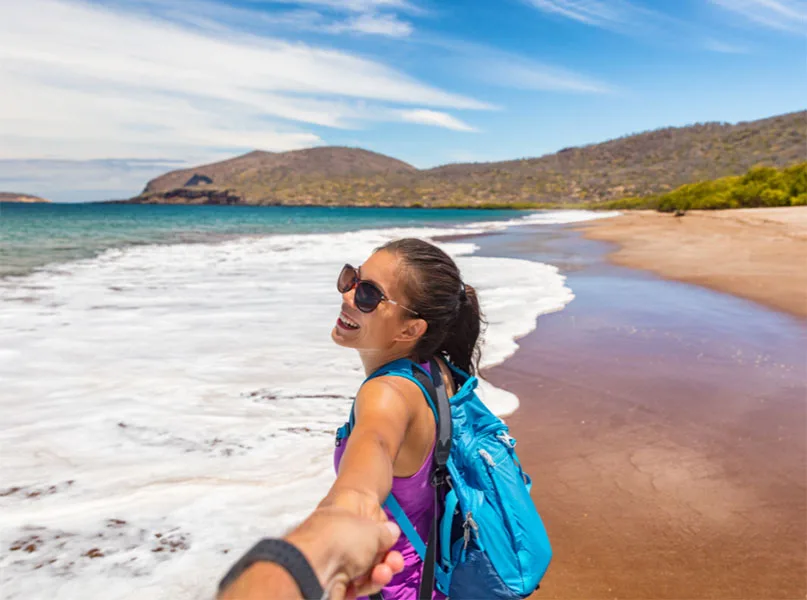
Sleep:
FOR A REFUGE OF TRANQUILITY AND BEAUTY…
A place where the immensity of the outside blends seamlessly with elegance, Hotel Indigo® Galapagos provides thoughtful decor, vibrant spaces, and unwavering spirit. After soaking in the magical views of the Pacific Ocean, guests can revel in global cuisine and local flavours at the hotel’s charming restaurant, Darwin’s Secret.
FOR A LUXURY ECO ADVENTURE…
Offering far more than just a place to stay, Pikaia Lodge crafts a magical and transformative experience as one of the most advanced green accommodations in the world, living and breathing environmental stewardship. Indeed, the space is specially designed for eco-conscious and thrill-seeking travellers who strive to be closer to the riveting natural world of the Galápagos Islands.
Pikaia Lodge is ideally located at the centre of the archipelago, nestled amongst the finest beaches the islands have to offer. As such, the hotel combines highly exhilarating and relaxing land-based and marine activities.
After a day of adventure, guests can sit and back and relax in one of the many stunning accommodations, whether it be the elegantly designed terrace and balcony rooms, garden suites, or pool suites, each facing lush, verdant landscapes that have characterised the wonderous archipelago.
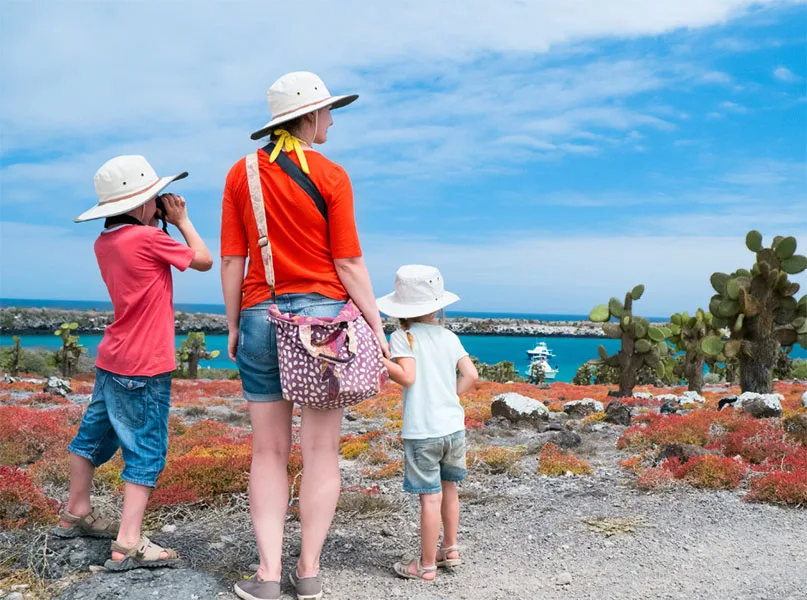
GALAPAGOS GIANT TORTOISES IN FOCUS
Boasting a plethora of magnificent endemic bird species, marine life, and land mammals, one of the Galápagos Islands’ most-known animal groups is the Galápagos giant tortoise. Although they are primarily found on Santa Cruz Island, 13 different species reside across the archipelago and have evolved to survive each island’s unique conditions.
The wallowing and beautiful creatures are the archipelago’s namesake; Galápagos is the old Spanish word for saddle, harking back to the name early settlers used to describe the tortoises with their robust, sturdy shells.
The Galápagos giant tortoise species have been one of the hardest hit historically, with much of the population being exploited during the 18th and 19th centuries, resulting in them becoming critically endangered.
As such, there has been considerable conservation efforts in recent decades to help restore these groups, including tortoise breeding and rearing programmes.
The most famous place to see the Galápagos giant tortoise in captivity is the Fausto Llerena Breeding Centre in Puerto Ayora. Here, visitors can see a vast range of species as well as gain a unique insight into how these creatures have evolved and the importance of protecting them.
Elsewhere, Galápagos giant tortoise populations are typically sighted in greener natural habitats across the islands’ highland areas, particularly in specialist reserves.
Notable farms include Rancho El Manzanillo, Rancho Primicias, and El Chato Ranch, where the tortoises roam free amongst an abundance of flora and fauna.
Visitors can also catch a glimpse of these majestic creatures on Volcán Alcedo between the months of June and December.
LANDMARK ATTRACTIONS
Darwin Lake
Named after Charles Darwin’s iconic expedition, this highly picturesque and dream-like lagoon is a landscape like no other. Situated at the end of a two-kilometre path on Isabela Island, the lake sits within a tuff cone of the mighty Volcán Darwin that can be seen from the lake, whilst a flurry of sea birds, such as Galápagos penguins and flightless cormorants, can also be observed.
Kicker Rock
Characterised by its signature boot-like shape and dramatically rugged cliff edges caused by centuries of erosion, the unique rock formation is a prime location for some of the best marine life the archipelago has to offer, making it the ideal place for snorkelling enthusiasts. Located near San Cristóbal Island, it also offers beautifully undisturbed beaches perfect for optimal relaxation.
Wall of Tears
Snaking through the undulating hills of Isabela Island, the Wall of Tears is a sombre but riveting reminder of the many prisoners sent to the island in the 1940s and 50s, who built the wall by hand over 14 years to surround their own prison. The wall is accessible via a short route that follows the shoreline near Puerto Villamil
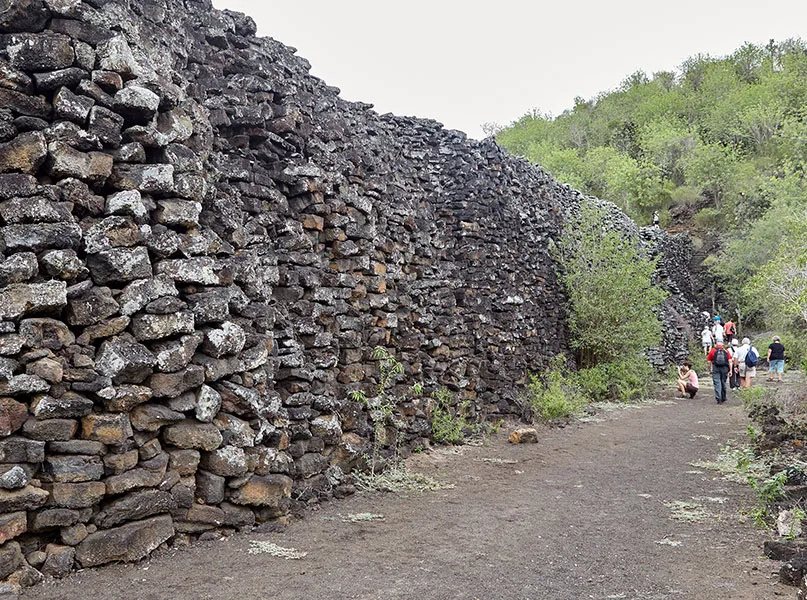
GETTING THERE & AROUND
The Galápagos Islands are only accessible by first flying to mainland Ecuador, before catching a flight from Mariscal Sucre International Airport (UIO) in Quito, Ecuador’s capital, or José Joaquín de Olmedo International Airport (GYE) in Guayaquil. From here, you can fly to one of the islands’ two main airports on Baltra and San Cristóbal Islands.
Travellers should note there are a number of mandatory fees when visiting the archipelago. Given that the Galápagos Islands is a national park, travellers must pay an entrance fee in cash of USD$200 dollars or USD$100 for children under 12 years of age, paid upon arrival at the archipelago’s airports. International visitors must also obtain a USD$20 tourist Transit Control Card.
Once safely through the arrivals gate, travellers will be met by a specialist tour guide if they have booked a cruise or a land-based tour – the best recommended method of travelling around the island.
There are also many island-hopping experiences available, such as on small ferries – known as lanchas – which are ideal for small groups of visitors who wish to do more land-based activities and zip easily between the main islands of Santa Cruz, Isabela, and San Cristóbal. Alternatively, mega-yachts offer a more comprehensive journey through the islands but are typically
more expensive.
In any case, visitors still have the chance to delve deep into the coves or reach untouched shorelines with small, motorised dinghies, known as panga rides, that can reach areas inaccessible to larger vessels. This lets travellers have an up-close perspective of the fascinating creatures and intriguing habitats that surround them.


